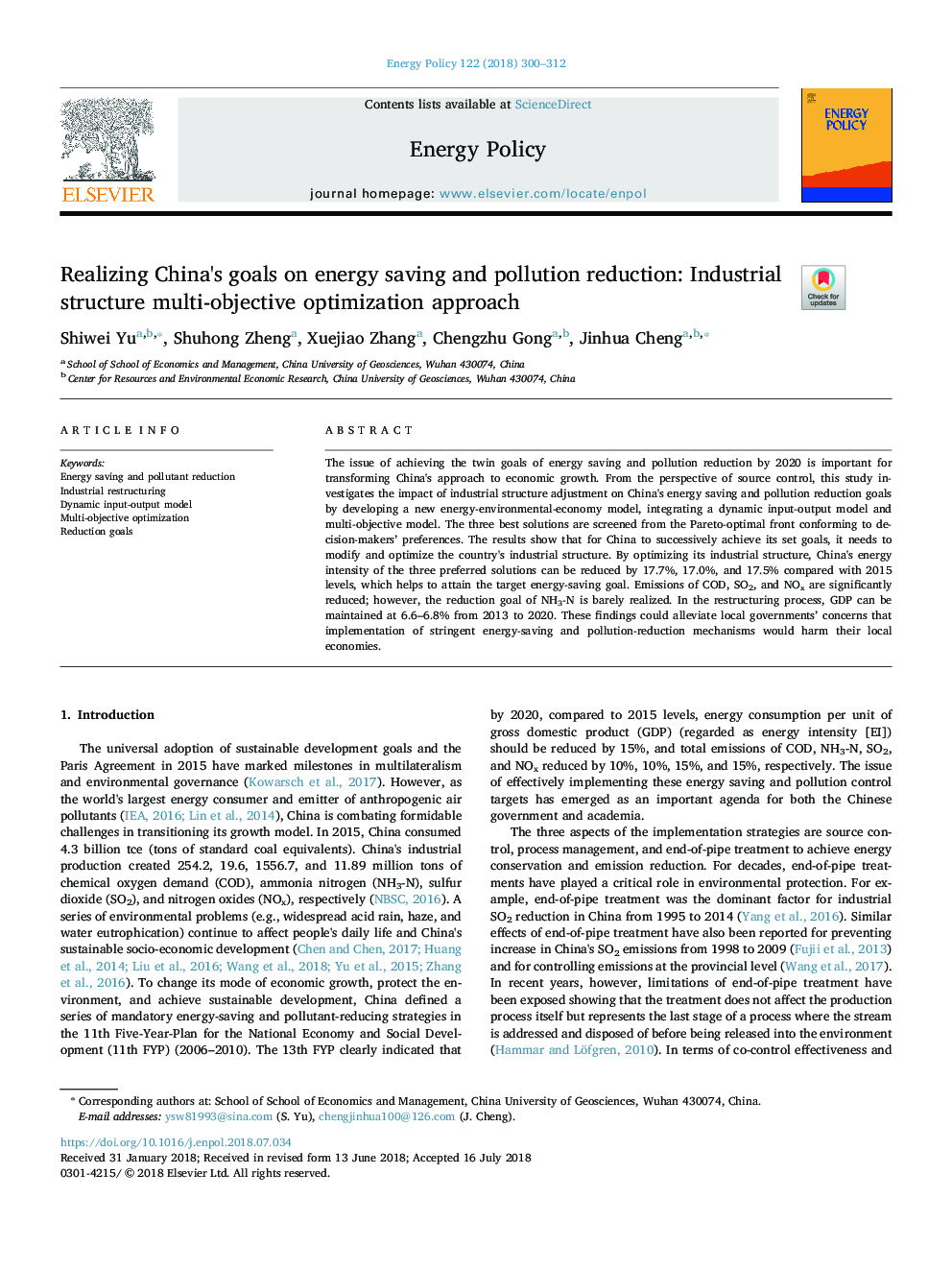| Article ID | Journal | Published Year | Pages | File Type |
|---|---|---|---|---|
| 7396674 | Energy Policy | 2018 | 13 Pages |
Abstract
The issue of achieving the twin goals of energy saving and pollution reduction by 2020 is important for transforming China's approach to economic growth. From the perspective of source control, this study investigates the impact of industrial structure adjustment on China's energy saving and pollution reduction goals by developing a new energy-environmental-economy model, integrating a dynamic input-output model and multi-objective model. The three best solutions are screened from the Pareto-optimal front conforming to decision-makers' preferences. The results show that for China to successively achieve its set goals, it needs to modify and optimize the country's industrial structure. By optimizing its industrial structure, China's energy intensity of the three preferred solutions can be reduced by 17.7%, 17.0%, and 17.5% compared with 2015 levels, which helps to attain the target energy-saving goal. Emissions of COD, SO2, and NOx are significantly reduced; however, the reduction goal of NH3-N is barely realized. In the restructuring process, GDP can be maintained at 6.6-6.8% from 2013 to 2020. These findings could alleviate local governments' concerns that implementation of stringent energy-saving and pollution-reduction mechanisms would harm their local economies.
Related Topics
Physical Sciences and Engineering
Energy
Energy Engineering and Power Technology
Authors
Shiwei Yu, Shuhong Zheng, Xuejiao Zhang, Chengzhu Gong, Jinhua Cheng,
